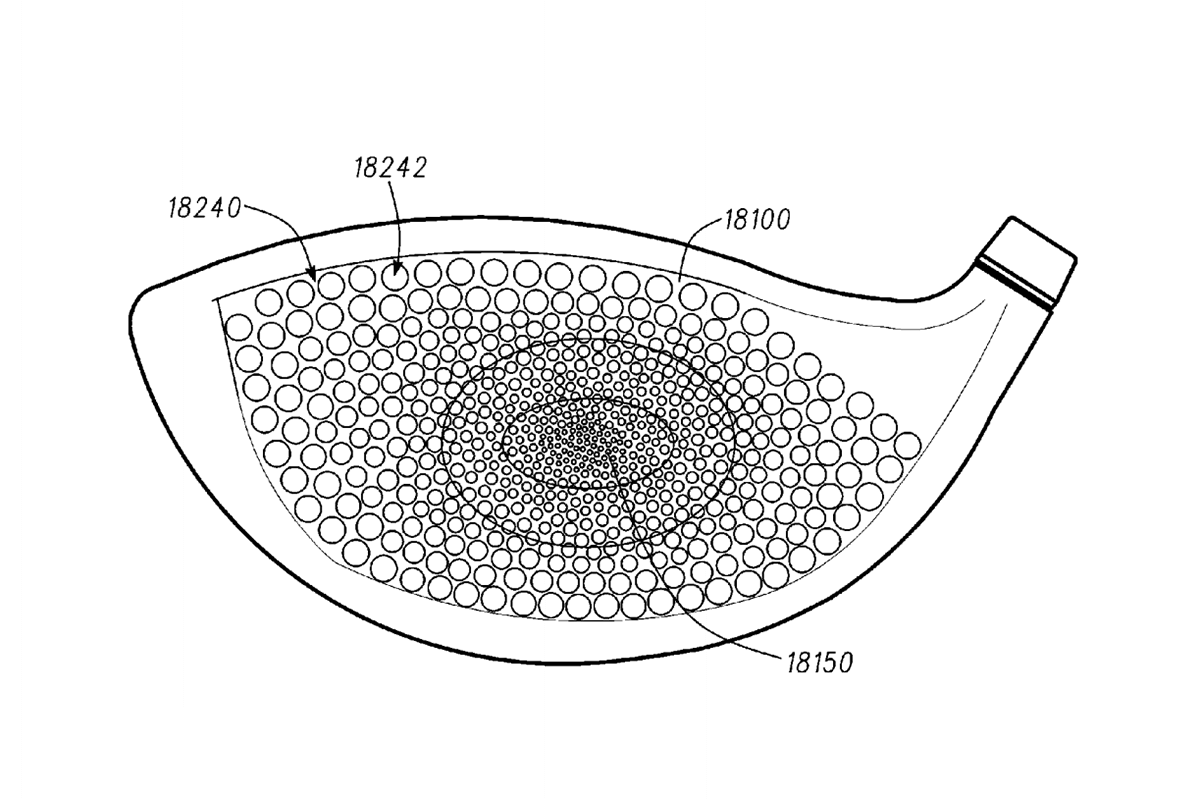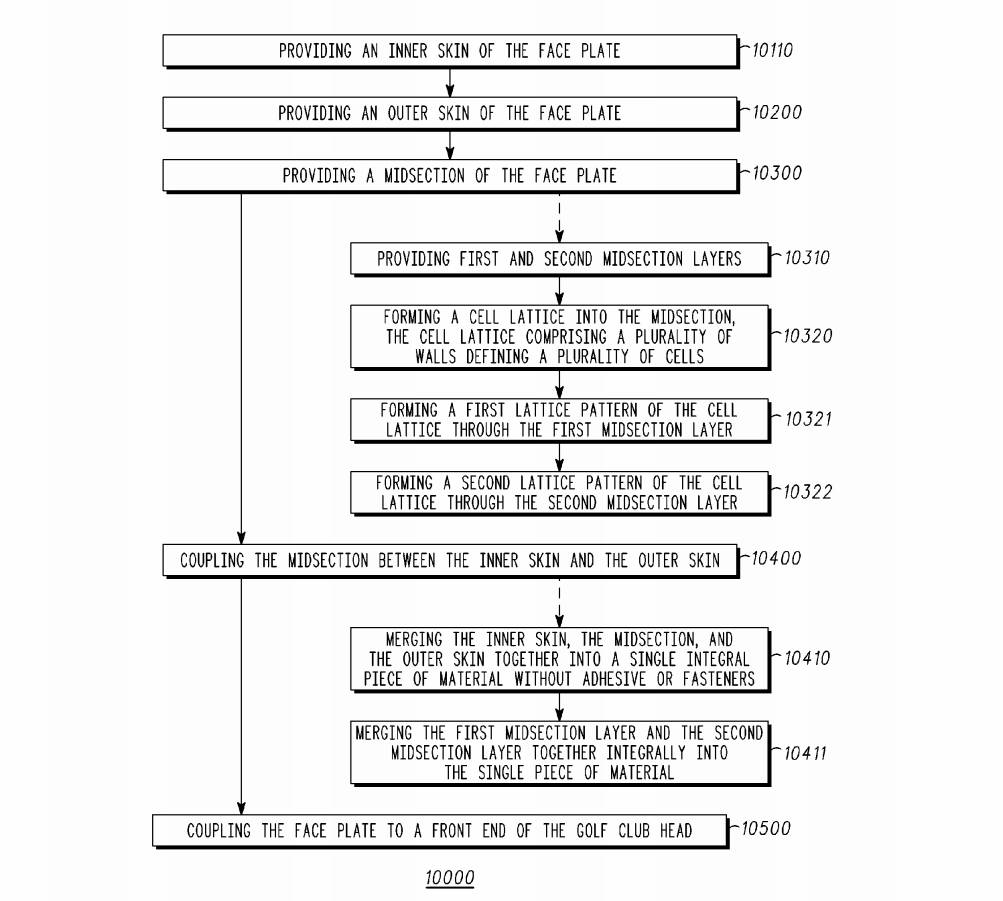The tradenames differ; PWRShell, Exo-Cage, Dragonfly, thick-thin, CEll, R*Moto, and many (many, many) more, but the fundamental goal is the same. Golf companies have designed thousands of technologies for the near singular purpose of saving weight.
And while that might sound a bit repetitive, it’s all quite purposeful. Every little bit matters. In fact, if I were to take all that I’ve learned about golf club design and sum it up in a single sentence, it would be this:
Yawn. I bore myself.
Why does weight matter so much?
Consider the narrow constraints on driver design. A driver head is seldom smaller than 440cc, and it can’t exceed 460cc in volume. Its static weight can’t go much above 205g. Any heavier and the head becomes cumbersome to swing. Go too much lighter and not only does MOI suffer, but you’ve left yourself without any extra weight with which to play.
+/- 10 grams, the total weight of a driver’s head is nearly fixed.
To free-up that highly desirable discretionary mass, golf companies have worked hard to steal weight where they can. The crown is a popular target, as engineers can reduce weight through clever structures (e.g. PING’s Dragonfly, Cobra’s Cell technology) and lighter materials (the Triaxial composite crown on Callaway’s Fusion driver is reportedly sub-11 grams), so they can strategically reallocate those savings elsewhere.
That’s worked reasonably well, but saving weight in the face has proven more difficult. That’s a problem because the face is where the bulk of the weight is located in current driver designs.
To free up mass without exceeding USGA limits or compromising durability is a challenge. Put another way:
That’s pulled from a recently updated PING patent filing titled Golf Club Face Plates with Internal Cell Lattices and Related Methods.
I know, the title really sucks you in, doesn’t it? But here’s the thing – if what it describes actually materializes, we really could be looking at the future of club design.
At its core, the patent outlines various embodiments of how one might build a club face using a series of layers, some of which contain lattice or cell structures.
Holes are 100% Air
Golfers often point out that trees are 90% air. It’s similarly true of lattice, for which the defining characteristic is arguably holes. Holes are 100% empty space and those empty spaces weigh absolutely nothing.
What does that mean for club design?
The patent suggests that a variety of materials could be used independently or intermingled within a layered driver face. Solid layers would be placed on the outside where impact occurs, while lattice layers could be used between the outer layers to save weight and tweak responsiveness.
Visually, it’s a bit like a sandwich with plenty of Lacey Swiss between your slices of bread.
3D Printed?
While the patent specifically lists different titanium alloys as potential materials, it also suggests that some or all of the layers could be printed. This too is a really big deal.
There’s a growing consensus that 3D printing represents the future of how golf clubs could be made, and given PING’s brief flirtation with 3D printed putters, it’s not surprising that it’s investigating other ways in which it could leverage the technology.
Also mentioned is that the lattice cells (holes) could be of different shapes and sizes and that different shapes could be used independently or in combination to build the face structure. There are multiple (related) methods that could, theoretically speaking, be used to build a layered face with internal cell lattices.
It’s all coming together… literally.
As for PING’s plans to bind all of the layers together – it’s what you’d expect – adhesives or fasteners or high heat or pressure or some combination thereof. Again, there are multiple methods.
What’s So Great About Internal Cell Lattices?
The most obvious answer is that they offer the tremendous possibility for saving face weight. The patent suggests actual savings of between 8% and 25% percent (presumably over conventional designs). 8% would be significant. 25% is an engineer’s dream… the dirty kind.
For many companies, and PING in particular, optimal driver design often means pushing the center of gravity low and back, while keeping it close to the neutral axis. In plain English, internal cell lattices create a plausible way to create a high launching, low spinning driver with improved forgiveness and no compromise on ball speed. And in theory, they make all of that possible within the confines of a conventional/traditional shape. No triangles or squares required.
It’s all wrapped up in boring patent-speak, but I assure you, this is exciting stuff.
By using layers of varying thickness, or altering cell heights and patterns from the center to the periphery regions, it could be possible to tune the flexibility, and ultimately, the responsiveness of different areas of the face.
That’s about finding new and more effective ways to maintain ball speed across as much of the face as possible, without compromising durability or introducing any of what PING calls detrimental bending (flat spots where your bulge and roll used to be).
This is potentially a really big deal, and while I hesitate to call anything a game-changer, it very well could have a significant impact on how clubs are designed in the near future. Of course, it could just as easily prove to be a clever idea that never materializes in any meaningful way.
Is any of this actually coming soon to a driver near you? Stay tuned.



















Charlie
8 years ago
Going to be rattle city as each piece of that lattice breaks off inside the clubhead.